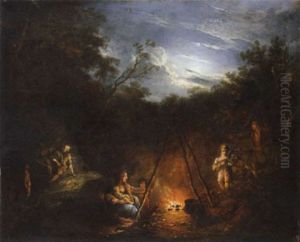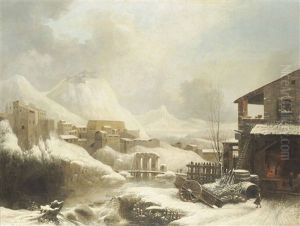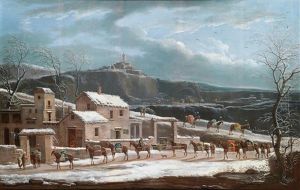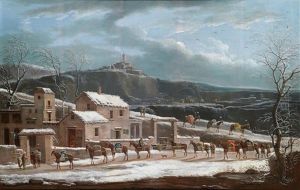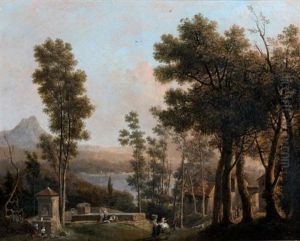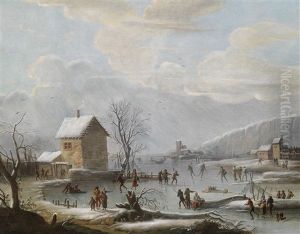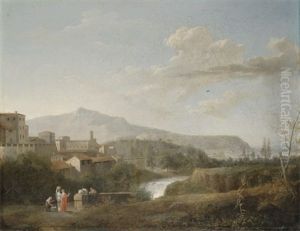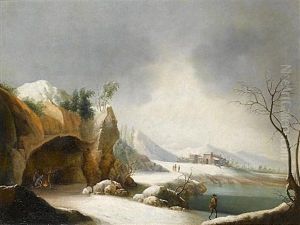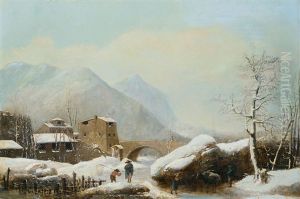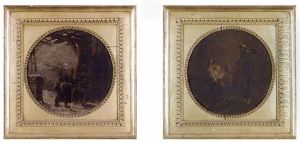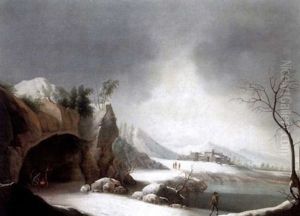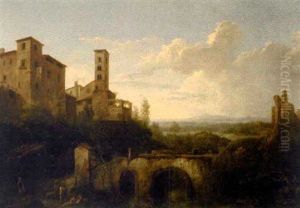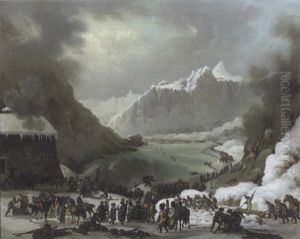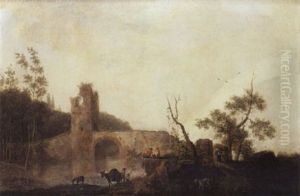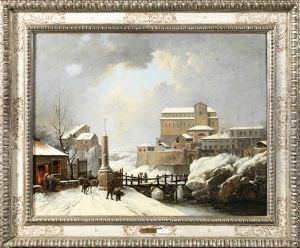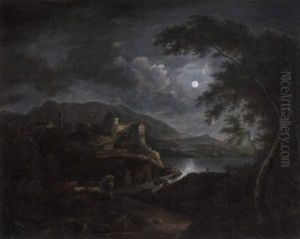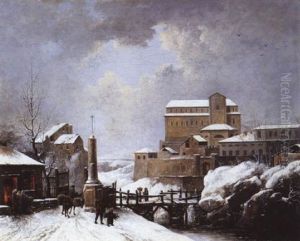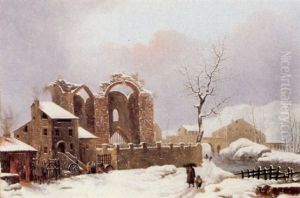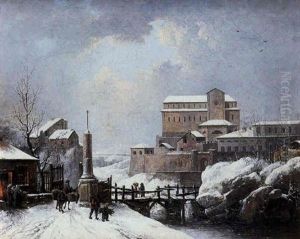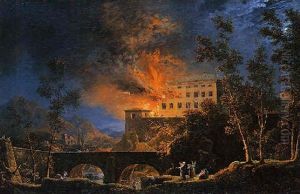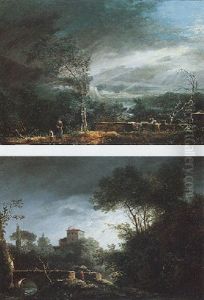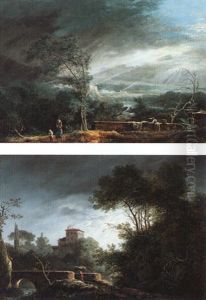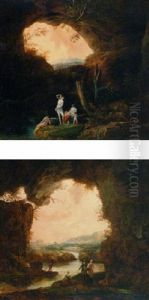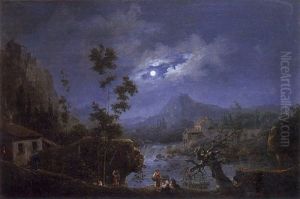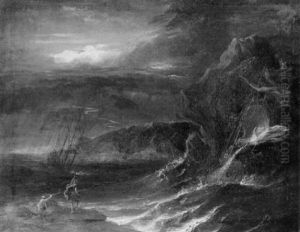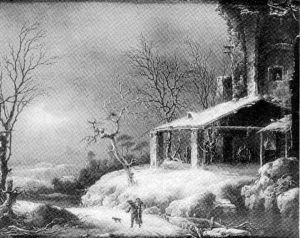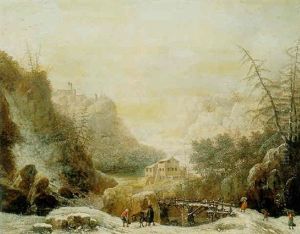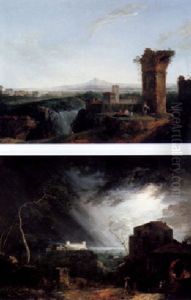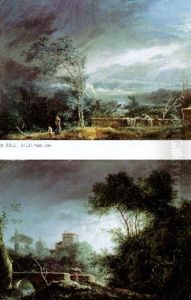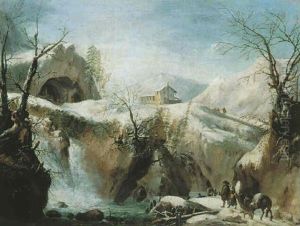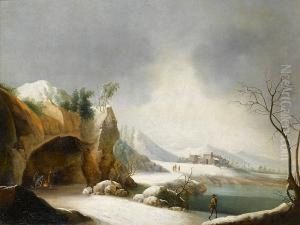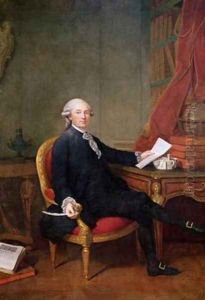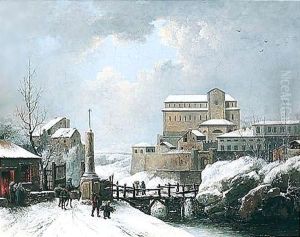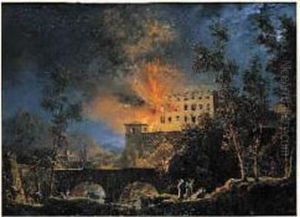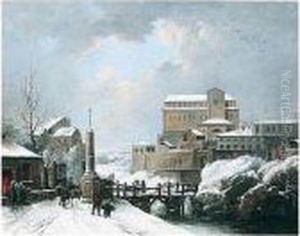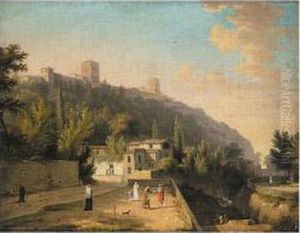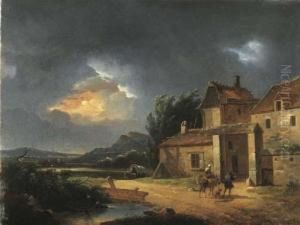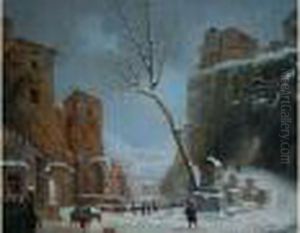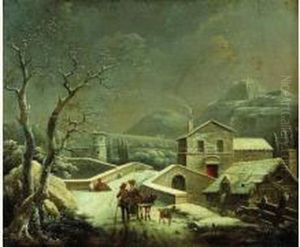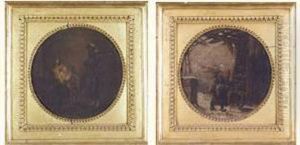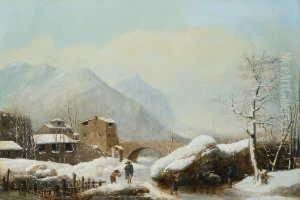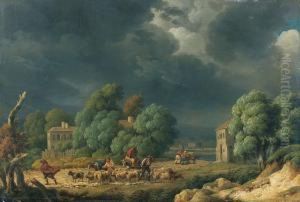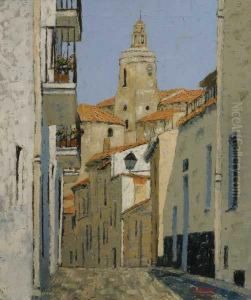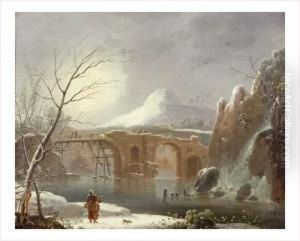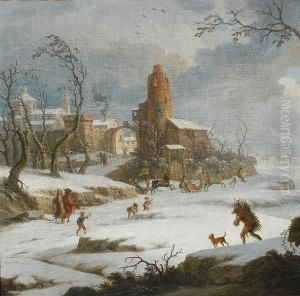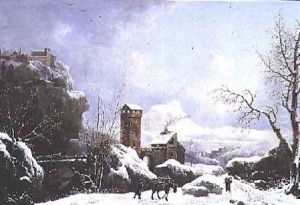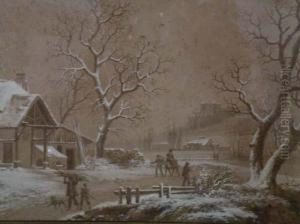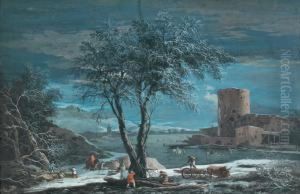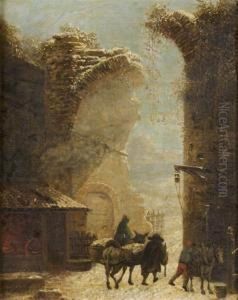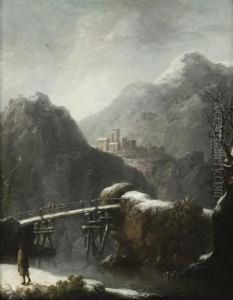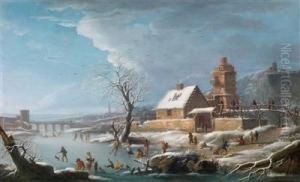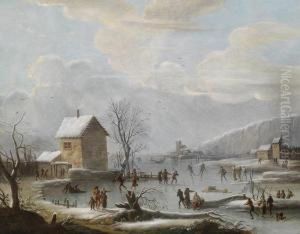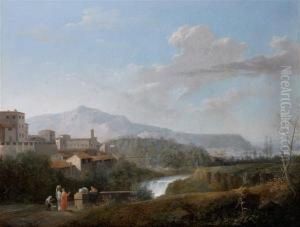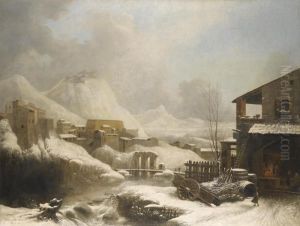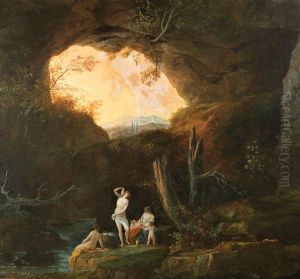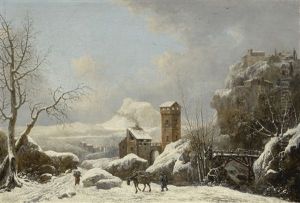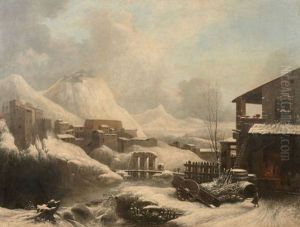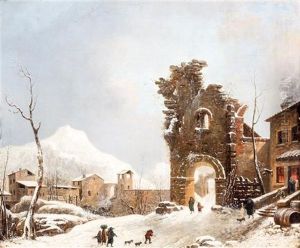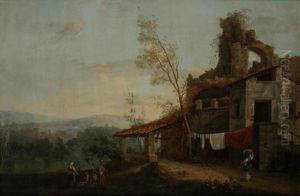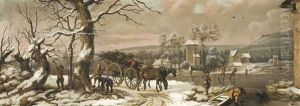Jules Cesar Denis van Loo Paintings
Jules Cesar Denis van Loo was a painter of French descent, born into the prolific van Loo family dynasty of artists that spanned several generations. He was born on October 19, 1743, in Paris, France. Jules was the son of Charles-Amédée-Philippe van Loo, a painter of the French court, and the grandson of the notable artist Jean-Baptiste van Loo, further cementing his place within an artistic lineage.
Jules Cesar Denis van Loo received his early training from his father and quickly absorbed the family's artistic tradition. He exhibited a strong inclination towards the arts and developed his craft under the guidance of his father, specializing in portraiture and historical subjects. He was influenced by the Rococo style, which was prevalent during his formative years, characterized by lightness, grace, and the use of delicate colors.
Despite the artistic environment he was born into, Jules Cesar Denis van Loo did not achieve the same level of fame as some of his relatives. He lived and worked during a period of significant change in France, which included the decline of the Rococo style and the rise of Neoclassicism. The French Revolution and the Napoleonic era also brought about dramatic shifts in the art world, which impacted many artists of the time.
Nevertheless, Jules Cesar Denis van Loo contributed to the family's artistic legacy. He continued to work as a painter, although details about his career and works are less documented and remain relatively obscure compared to those of his more famous family members. He lived through a turbulent period in French history, witnessing the upheavals that transformed not only the political and social landscape but also the realm of art and culture.
Jules Cesar Denis van Loo died on January 13, 1821, in Paris. While he may not have enjoyed the same level of recognition as other van Loo artists, his life and work remain part of the broader narrative of the van Loo family's impact on European art history.
